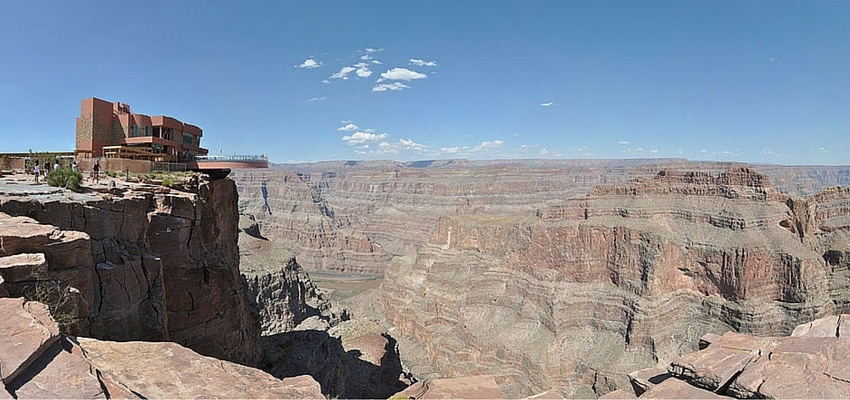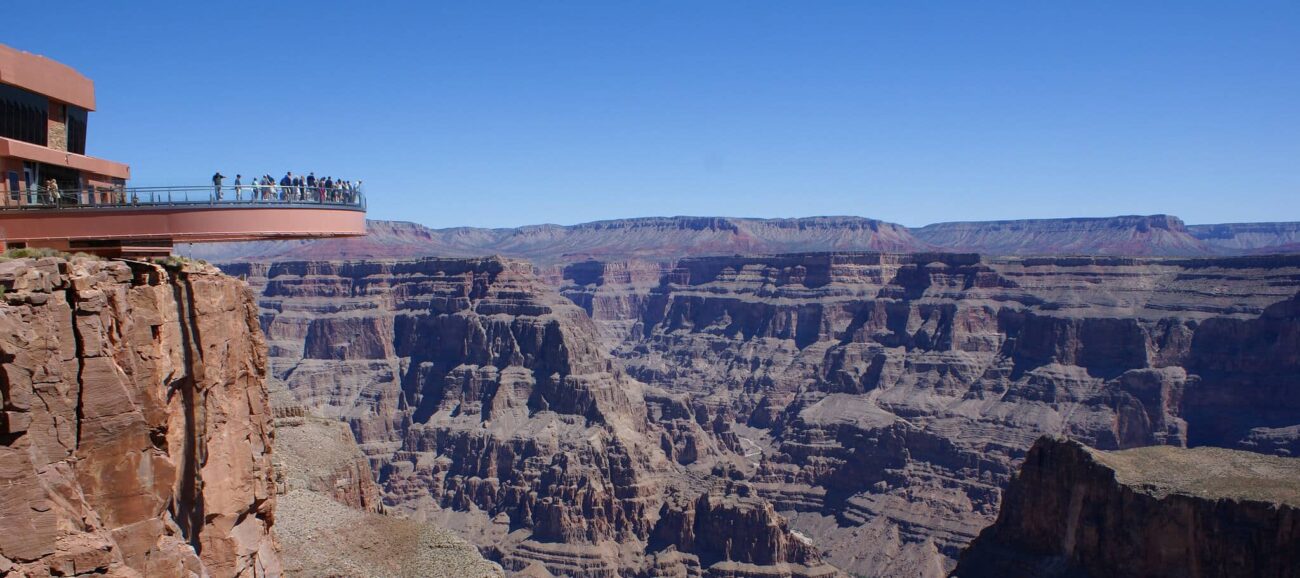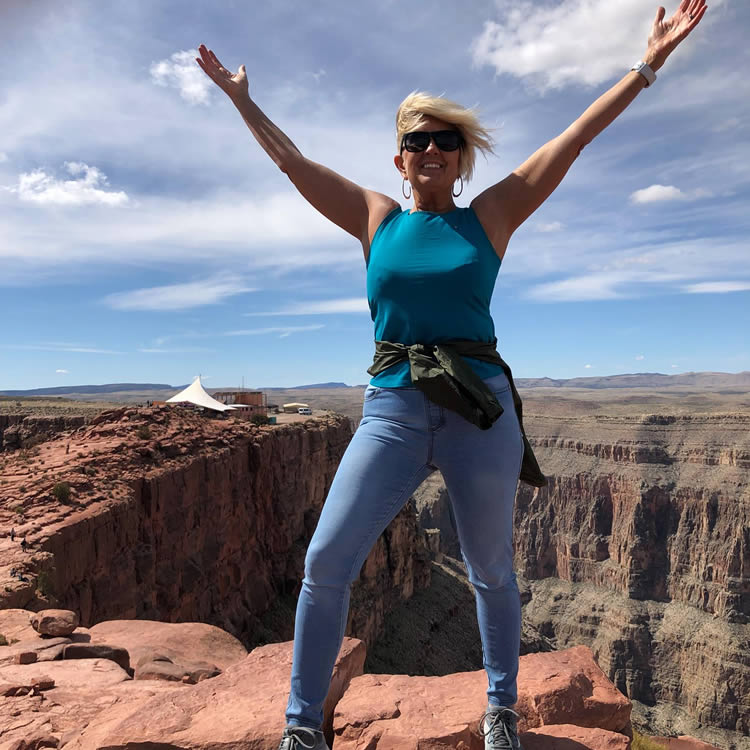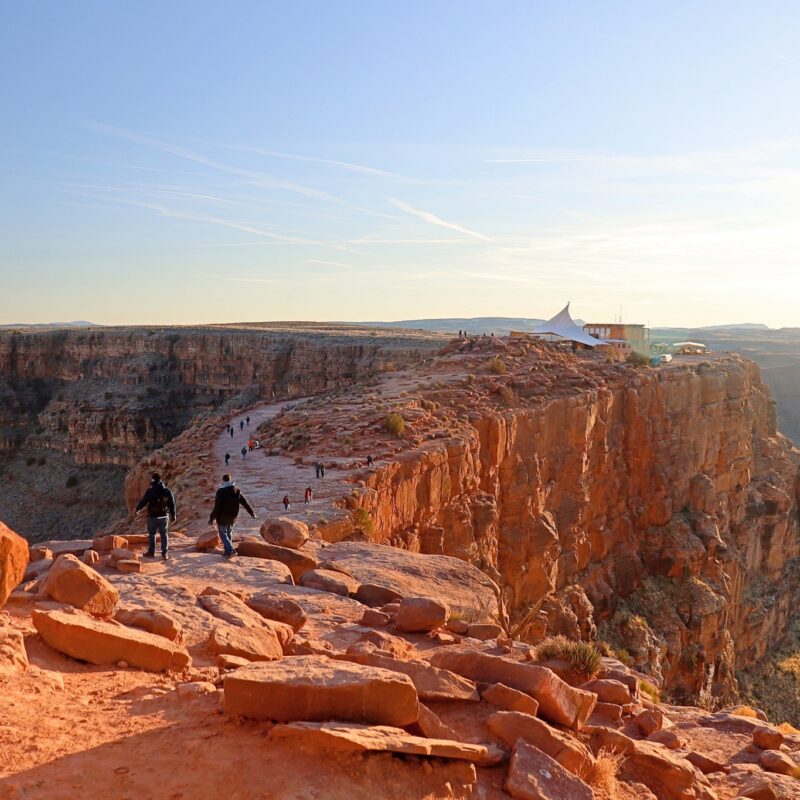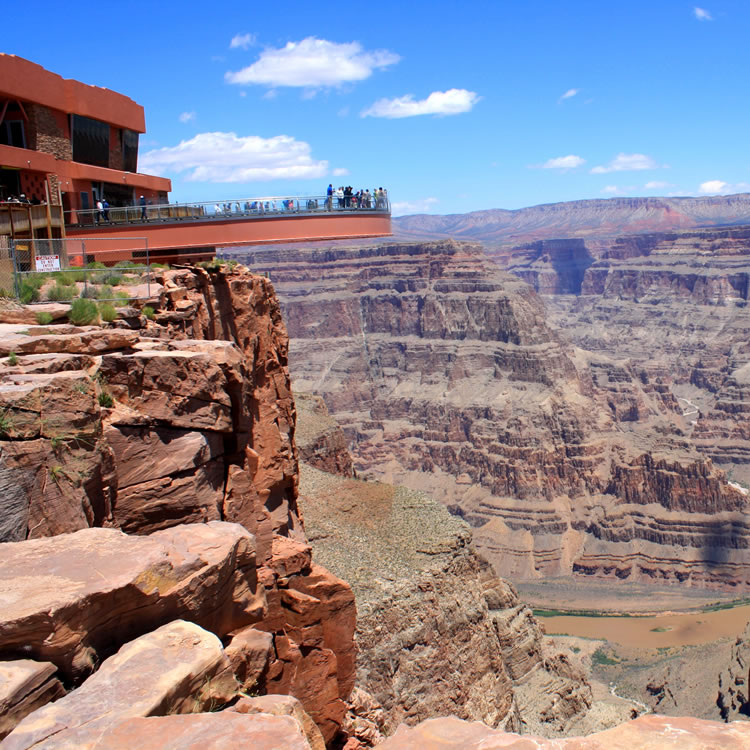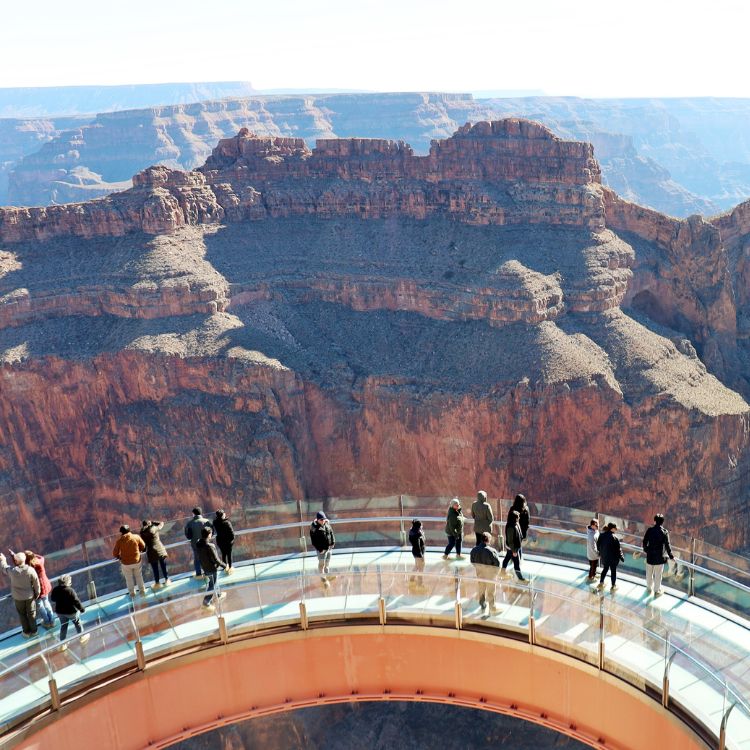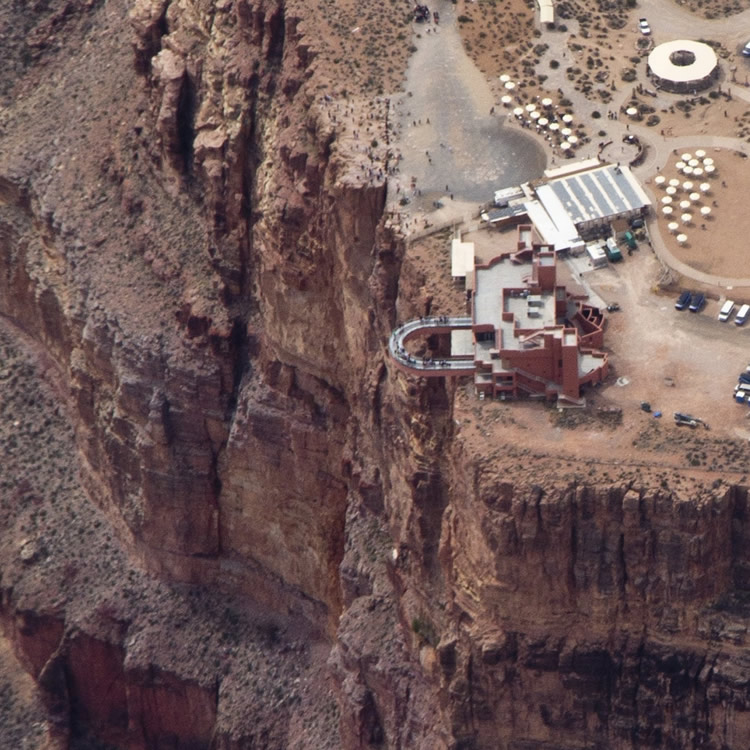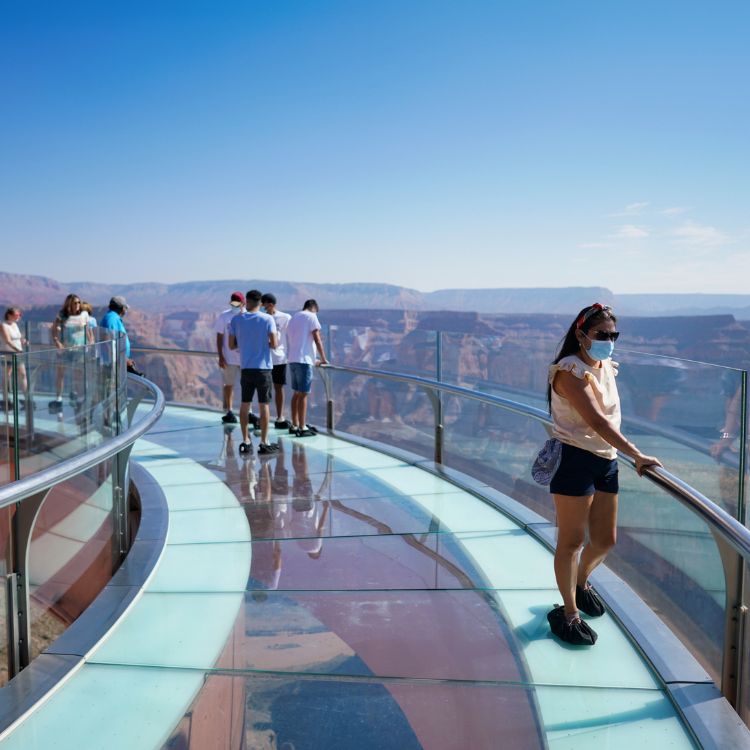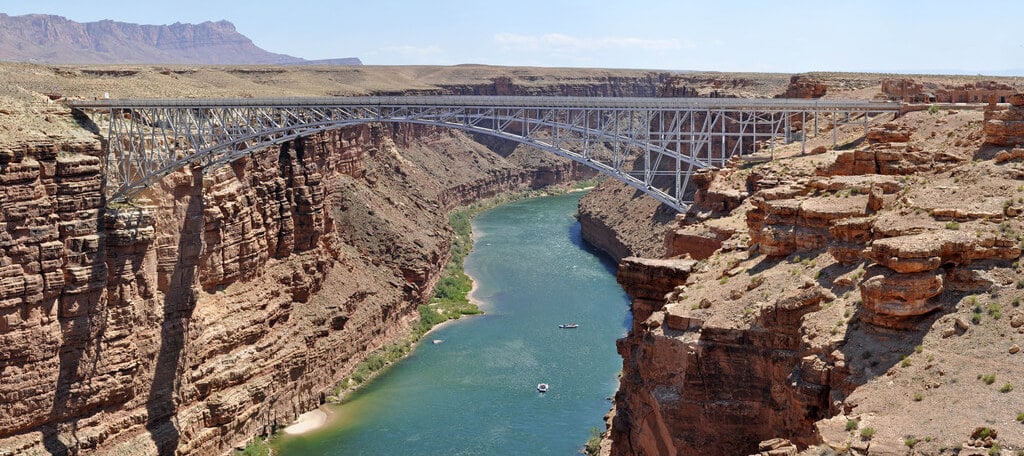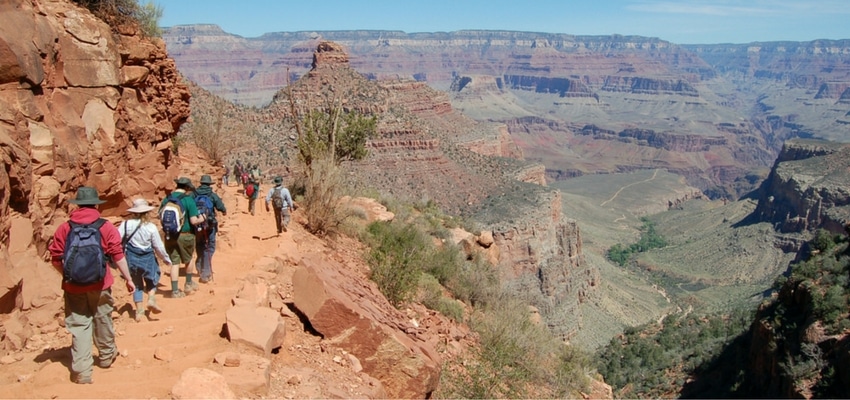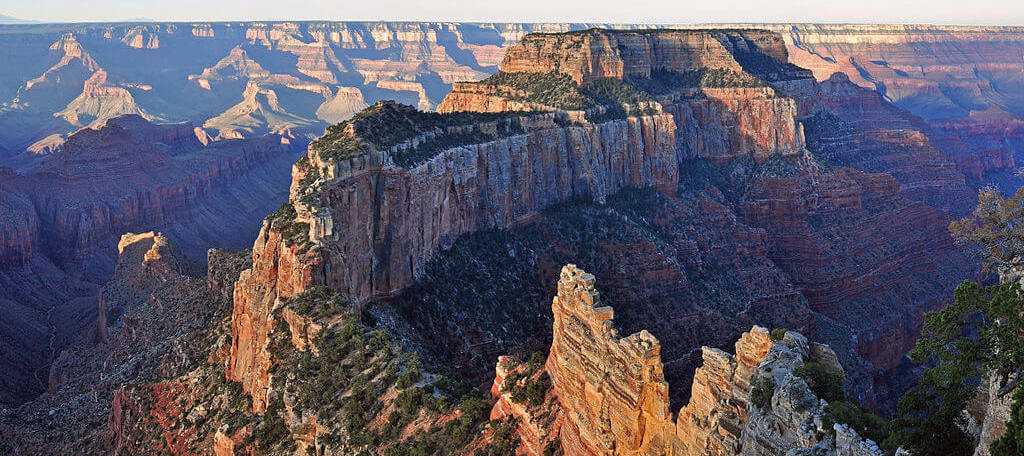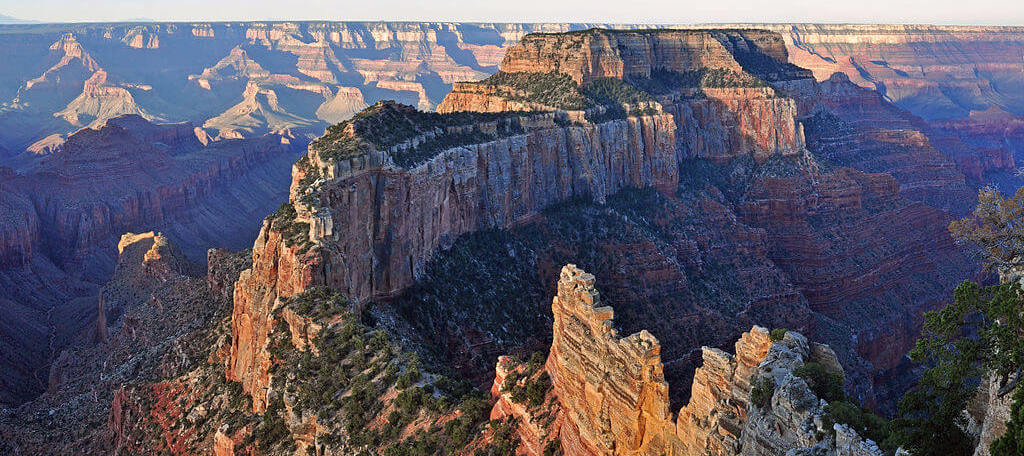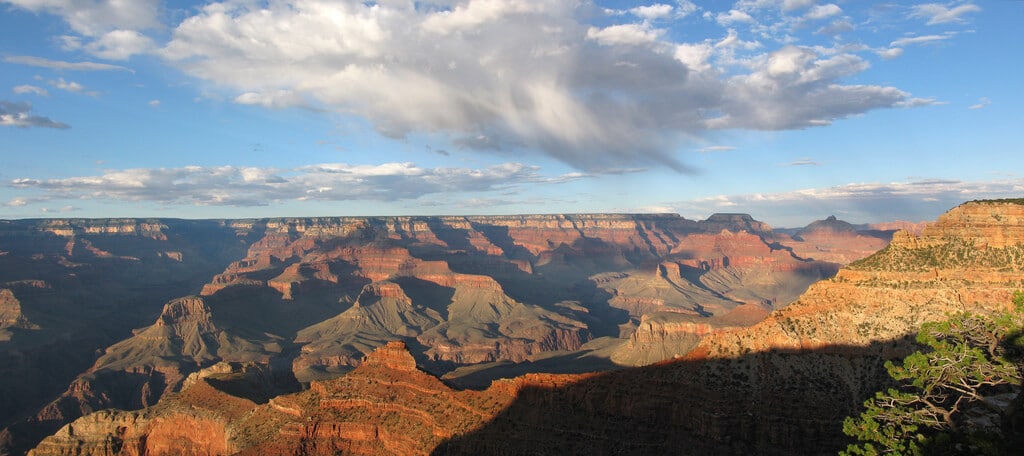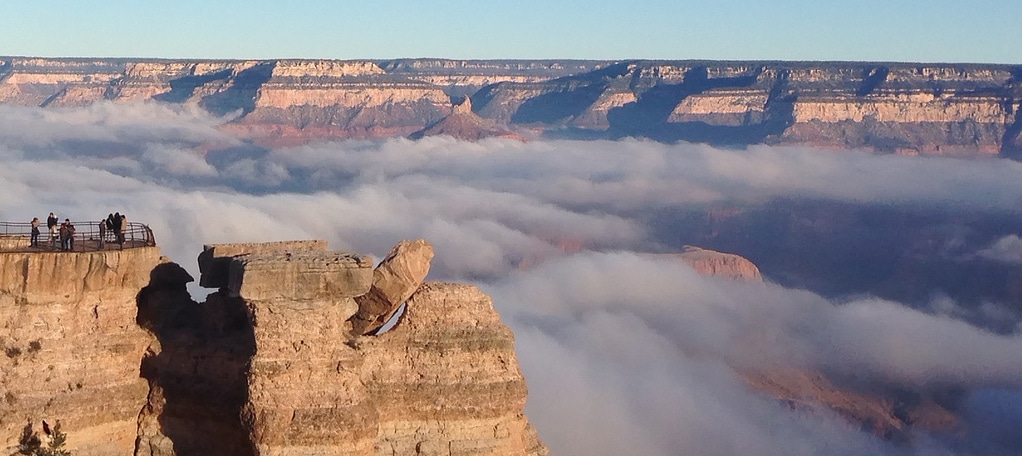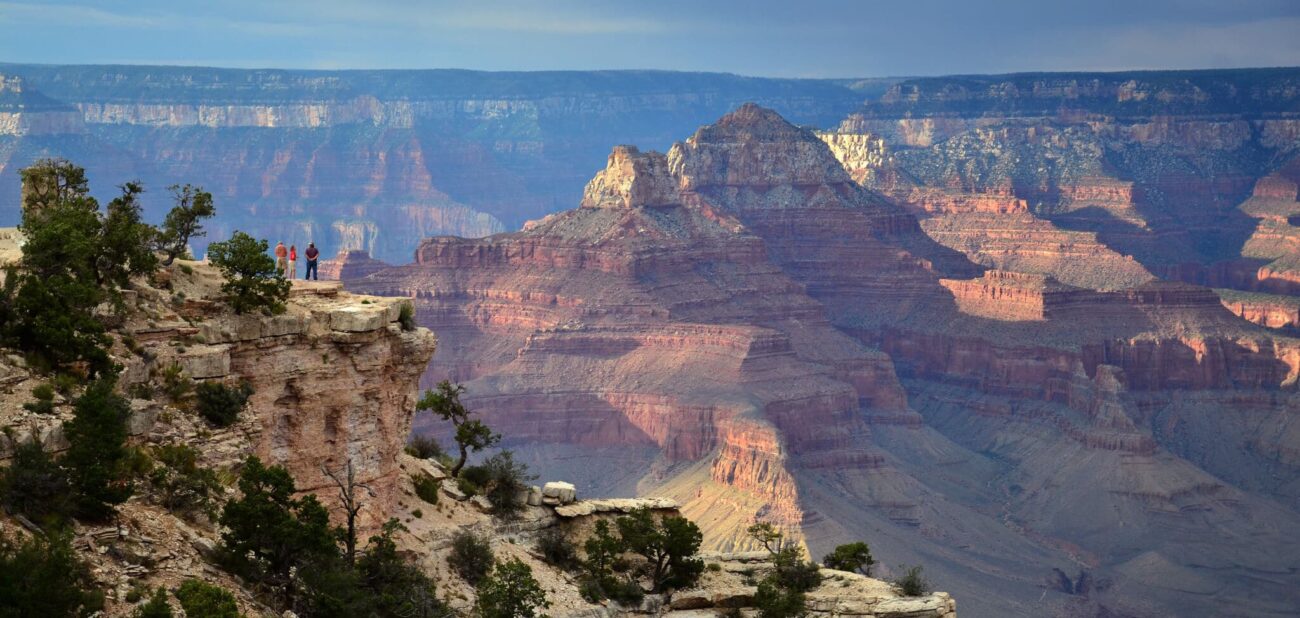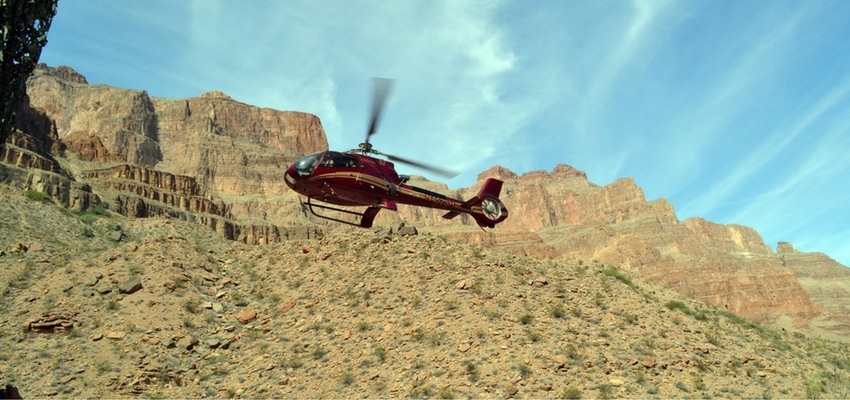The Grand Canyon Skywalk

The Grand Canyon is an impressive sight, whether you’re exploring the Rim’s many scenic viewpoints or venturing down into the chasm on one of the Canyon’s hiking trails.
But there’s one way to see the Grand Canyon that simply nothing compares to – from the Grand Canyon Skywalk!
The Skywalk, located on the West Rim of the Grand Canyon, is a U-shaped glass cantilever bridge that extends 70 feet out from the Rim at Eagle Point. Nothing gets your adrenaline pumping faster than peering 4,000 feet straight down to the Canyon floor through several inches of glass!
Skywalk Design
The Skywalk was first envisioned by Las Vegas businessperson David Jin when he visited the Grand Canyon in 1996. Jin worked with three companies to bring the Skywalk to life: Lochsa Engineering and MRJ Architects supplied the design and engineering, and Executive Construction Management oversaw the construction of the bridge.
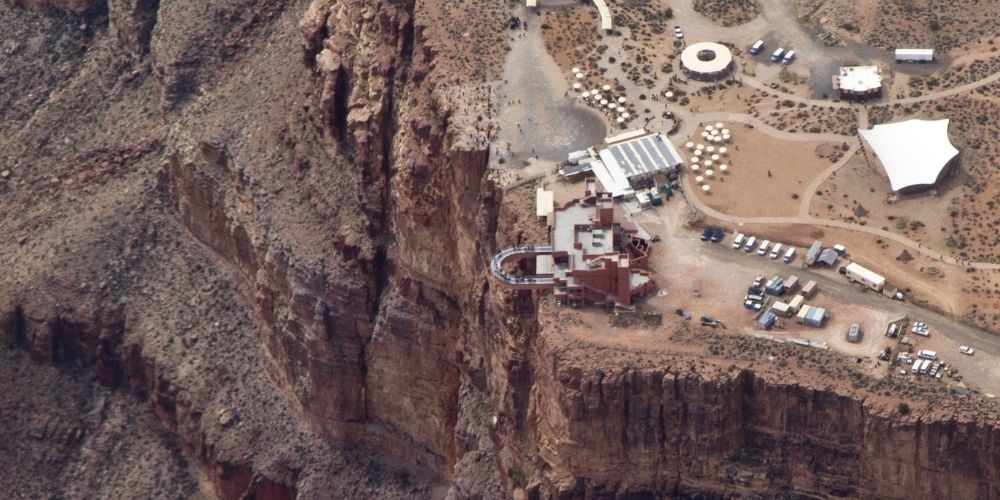
The cantilever bridge rests on a foundation of 8 columns that support box beams that are six feet tall, 32 inches wide, with two inch thick walls. These box beams serve as counterweights for the cantilever design, and are anchored by 45-foot-deep foundations in limestone bedrock capable of supporting 16,000 lbs of pressure per square inch.
The Skywalk itself is supported on tuned mass dampers that reduce normal vibrations caused by wind and people. These dampers help also distribute the weight of the bridge.
Construction
Construction of the Skywalk began on October 6, 2004 when the Hualapai tribe blessed the site. Drilling began one month later, and wouldn’t be complete for an additional 1.5 years. It took a Utah-based manufacturer an additional four months to weld the 40 foot beams that would be used to create the Skywalk and truck them to the construction site in Arizona.
The Skywalk was assembled on site and lifted into place using manipulators specially designed to lift the heavy glass panels using large suction cups. 2.5 years after construction began, these glass panels were rolled into place using the same method the ancient Egyptians used to build the pyramids. Watch this video to learn more:
The completed Skywalk is reported to have cost $30 million to build. It weighs well over a million pounds, with the steel alone weighing in at 1,000,000 lbs and the glass floor an additional 80,000 lbs.
The Skywalk first opened in March 2007. The first people to walk across its glass floor were Buzz Aldrin and Jon Herrington, the first native American astronaut.
The Glass Floor
When the Skywalk was first built, the glass floor consisted of four layers and 46 panels of low iron glass. It was four inches thick, 10’2” inches wide, and each panel weighed about a ton.
In 2011, the Skywalk floor was replaced with new glass manufactured in by a Spanish company that specializes in producing strong bomb-proof glass for embassies and other buildings. The new glass floor consists of five layers of glass measuring 2.5 inches thick, with each sheet weighing in at about 1,800 lbs. The panes are so heavy it actually took a 150 foot crane to lift each one into place!
The new floor also features a “sacrificial” layer of glass that can be removed and replaced by hand if it gets scratched – no giant crane required.
Is It Safe?
Yes! The Skywalk is perfectly safe. It can support over 71 million pounds – that’s the equivalent of more than 70 fully loaded 717 airplanes, or more than 800 200 lb people (though its maximum occupancy is only 120 people)! It can also withstand winds up to 100 miles per hour, as well as magnitude 8.0 earthquakes within a 50 mile radius.
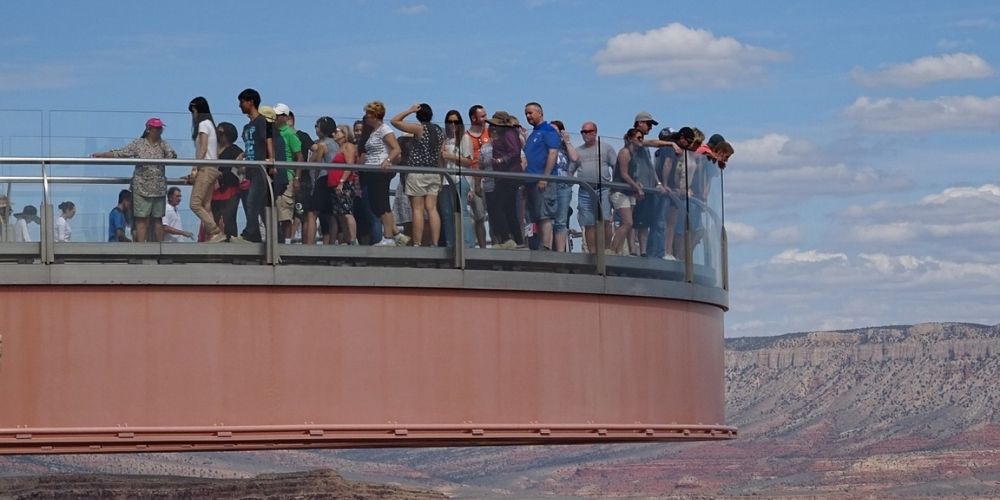
You don’t have to worry about falling, either – the Skywalk is also surrounded by a 5’4” glass fence.
Find answers to all your questions about the Skywalk on our blog.
Skywalk Tourism
The Grand Canyon West region is not owned by the National Park Service like the North and South Rims. If you purchased an entry pass from the NPS, it will not be valid at Grand Canyon West.
The West Rim is maintained and operated by the Hualapai indians. To gain access to the West Rim’s viewpoints and attractions (including the Skywalk), you must purchase an admission package when you first arrive. There are different packages available at different prices ranging from $45-80 for adults – make sure you choose a package that includes a turn on the Skywalk! Some packages include meals. VIP packages and add-ons are also available.
Cameras and other personal items are not allowed on the Skywalk in case they fall and scratch the glass – or worse, if they’re accidentally dropped over the side of the bridge! Professional photographers are ready and waiting if you want a shot of you and your loved ones on the Skywalk, and souvenir photos can be purchased at the gift shop back on the Rim.
For more information on visiting the West Rim, read our West Rim Visitor Guide.
Skywalk Tours
Many guided tours include admission to the Skywalk. Here are some of our most popular:
Grand Canyon West Rim Bus Tour with Optional Skywalk & Free Wi-Fi
$85.00 – $150.00Grand Canyon Helicopter and Indian Experience
$549.00 – $569.00Grand Canyon Helicopter, Boat & Skywalk Tour
$864.00 – $884.00Grand Canyon Helicopter Tour & Skywalk
$584.00 – $604.00The Complete Grand Canyon Visitor Guide
Find answers to all your questions about the Grand Canyon in our guide!

